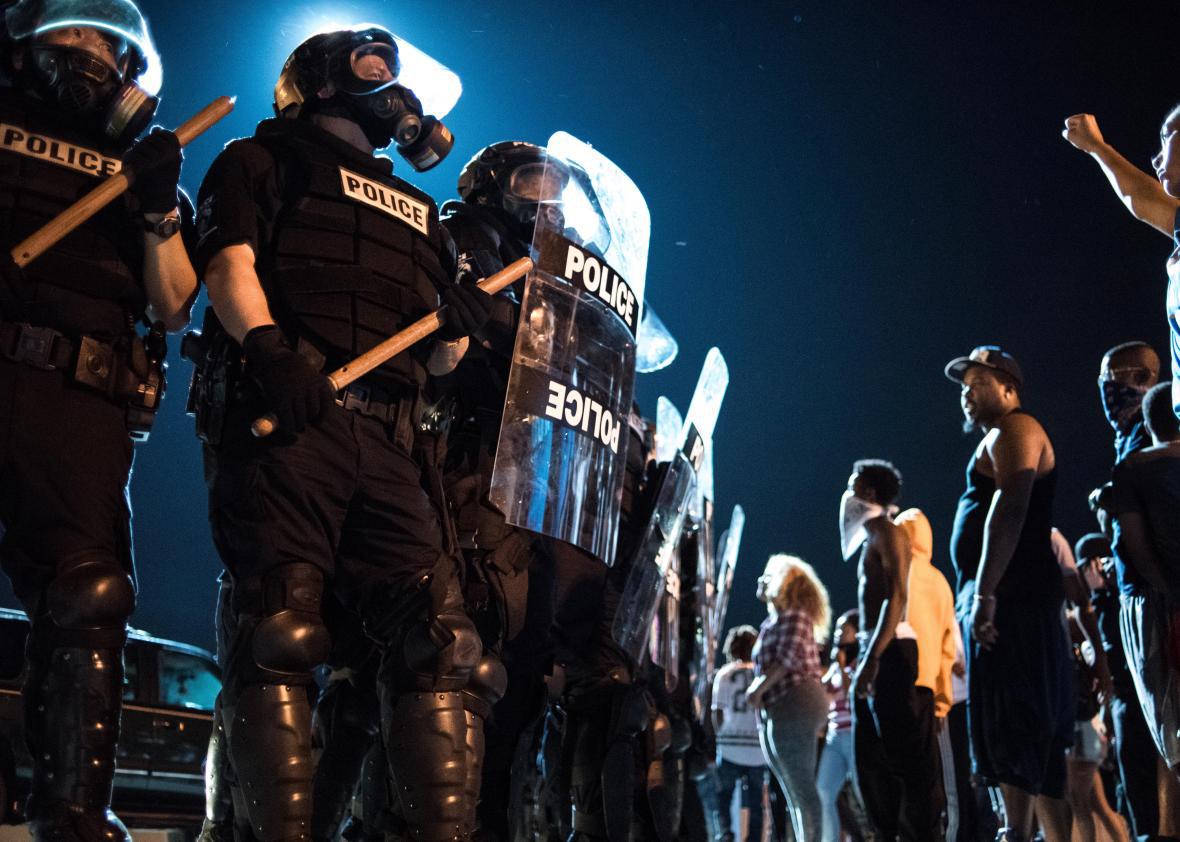On Thursday, Attorney General Loretta Lynch announced that the FBI will soon start a new national database to track police use of force. If it works the way the feds hope it will, the new database will be more complete than the woefully inadequate—in the FBI director’s words, “ridiculous” and “embarrassing”—old one, and will include information not just on fatal encounters but other instances of police violence as well.
The New York Times calls the new effort, which was first teased last December, the federal government’s “most ambitious” attempt yet to track police use of force. This is good news, because its past attempts have resulted in completely inaccurate statistics about how many people are killed by police every year. According to the Washington Post, which started its own comprehensive database of police shootings last year, official FBI data going back to 2011 has been based on voluntary reports from just 3 percent of the country’s 18,000 state and local law enforcement agencies.
It’s unclear how the FBI’s new initiative will improve that response rate. Aside from a provision of $750,000 “designed to help local departments collect and publicly release information”—the NYT’s words, not the FBI’s—I’m not seeing any actual plan. So while it’s nice that the FBI’s going to start asking police departments to submit reports on a broader range of violent police encounters, there’s no reason to think that will translate into a better database if police departments can still just decline to respond.
The fact that so few police departments submit statistics on use of force to the federal government is hard to understand for at least two reasons. The first is that there’s a law on the books called the Death in Custody Reporting Act that, since 2014, has required local police agencies that receive federal grants to report all fatal encounters involving their officers. So why do so few police departments comply? I asked Seth Stoughton, a former police officer who is now a law professor at the University of South Carolina School of Law. His answer makes it clear why the data the FBI has been getting thus far has been so incomplete:
The federal law applies to funding that goes to the states, so the states (typically through the state Attorney’s General office) are supposed to report information to the federal government. But 48 states don’t have laws that require local agencies to report the incidents to the AG, which means the reports that the AG pass on to the feds may not be complete. And in the two states that do have such laws—California and Texas—the laws don’t neatly parallel the federal requirements. In Texas, for example, Texas Code of Criminal Procedure Article 2.139 requires agencies to report officer-involved injuries or deaths, but it defines “officer-involved injury or death” as “an incident during which a peace officer discharges a firearm causing injury or death.” This is broader than the federal requirement in that it requires agencies to report on injuries, but it’s also narrower in that it’s limited to firearms. So if officers asphyxiate someone during the course of an arrest, the state would have to report it to the feds (under the Death in Custody Reporting Act), but the agency wouldn’t have to report it to the state.
So it’s a mess—and a mess that the new FBI initiative, as described, does not seem likely to untangle, especially because, as the Washington Post points out, the financial penalties that the federal government can impose on local agencies under the Death in Custody Reporting Act are only applicable to data related to fatalities. If what makes the new FBI database so “ambitious” is that it will include data on non-fatal encounters as well, it’s unclear how that ambition will be realized considering that, as its name suggests, the Death in Custody Reporting Act only covers the latter.
This gets to the second reason it’s hard for me to understand why police departments would be reluctant to share use of force data with the federal government: common sense suggests that a more complete picture of when police officers use force could potentially serve as a corrective to the highly selective, arguably biased manner in which media outlets, including Slate, cover police violence. As any law enforcement die-hard will tell you, reporters tend to write about use-of-force cases in which police officers appear to have acted violently in a way that seems avoidable, at least in retrospect. That translates to a handful of very high profile incidents that dominate and potentially skew the public’s understanding of how police officers think about force. The remedy to that is more comprehensive data. Here’s hoping the FBI has some trick up its sleeve that will make it possible to provide it.
